Features of the W-shaped profile
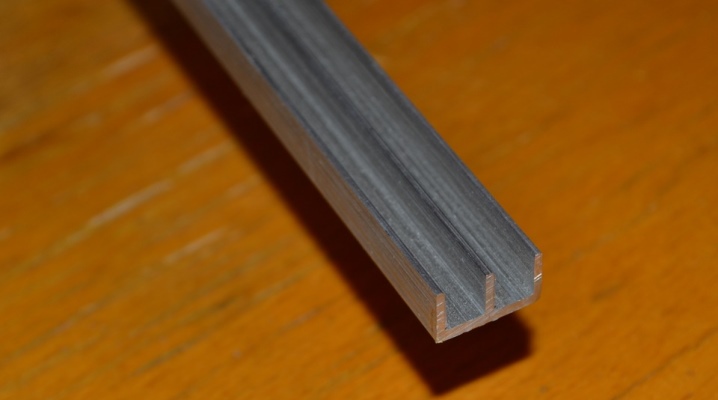
The W-shaped profile is widely used in the furniture industry. Shelves, wardrobes, pull-out trays are just a few of the options for its use. The design of rooms, offices and offices is characterized by sliding doors, sliding curtains, etc.

Specifications
The parameters of the W-shaped profile are:
- length of the product;
- thickness of aluminum alloy or steel;
- the width of the side that is a solid face;
- the gap between the perpendicular - at the same time and parallel to each other - guides;
- permissible bending load - when installing the profile in a suspended state (on supports, not flat);
- resistance of the material to corrosion and aggressive (salt, acid, alkali, water vapor) media.
According to the values of these characteristics, the best description is looking for a suitable product.
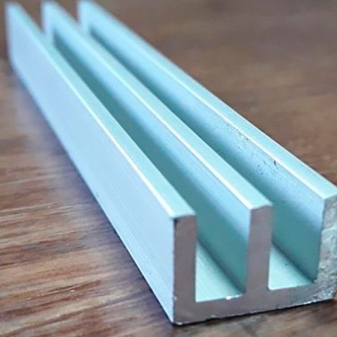

Advantages and disadvantages
Let's start with the merits of the W-shaped profile.
- Ease of installation and use in homemade furniture.
- Wear resistance - in comparison with boards and fiberboard sheets, from which simple drawers are assembled with a pull-out.
- Maintaining the accuracy of movement along the W-shaped guides for many years.
- Light weight - especially for plastic and aluminum products.
- Aesthetic appearance and the ability to build more complex structures.
- Splashes of water are retained in the Ш-profile, partly protecting the objects under the glass from waterlogging. The water that got into the Ш-profile easily collects in its depressions - and if there is a drainage point, it is promptly removed from it. However, wooden furniture should not be placed, for example, in the immediate vicinity of the shower.
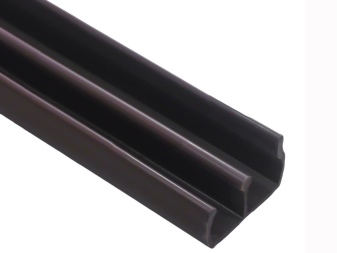
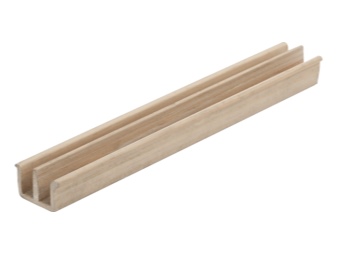
The disadvantages are also worth describing.
- The aluminum profile is easy to bend, the plastic one will simply break. The W-shaped strip does not tolerate careless handling.
- High sensitivity to incorrect mounting. Under-tightened (by the dimensions of glass or wheels) products will lead to backlash, overtightening - that the piece of furniture moved along the profile will not fit into the space delimited by the W-shaped guide. The situation is similar to the old-style windows without gaskets, not securely fixed in the frame.
- Windows and glazed doors, using the Ш-profile as a glass holder, "see through" in cold weather.
- The inability to ventilate the room is due to the windows and doors, in the W-profile of which sealing rubber is still inserted.
- Additional difficulties for the installation of the W-shaped profile in the factory cabinet.
The fact is that tempered furniture glass that did not fit in size due to the installation of an W-shaped profile with thicker walls must be replaced.
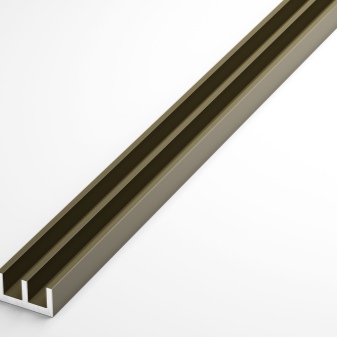
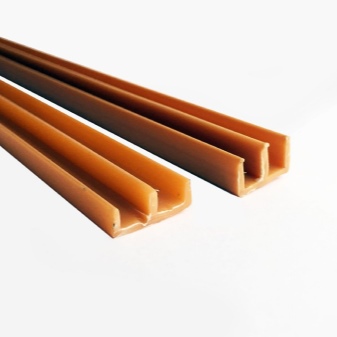
It is impossible to process (cut, grind) tempered glass - when you try to cut, grind off at least a small piece, it cracks in the wrong line. Cracks on tempered glass will spread chaotically, it will become unusable for further use.
Types and sizes
Catalogs of W-shaped profiles in stores and hypermarkets adhere to a certain line of standard sizes. Profile type by material: stainless steel, aluminum alloy, plastic (mainly polystyrene).
It is more difficult to make a wooden W-shaped profile: the thickness of the vertical walls is not made in a few millimeters, but in a centimeter or more. Although it is extremely simple to make it - using a router to cut spaced grooves along the edge of the board (or on a separate stick-insert with a rectangular cross-section) and cover them with waterproof varnish - wooden and wood-composite W-profiles are afraid of high humidity.

XX century furniture from Riga (produced in the post-war USSR era) - wall-hanging and prefabricated cabinets, wardrobes, cabinets. These pieces of furniture combined the capabilities of a multi-shelf storage compartment and a W-profile for sliding-folding doors and sliding glass.
We list the dimensions of the W-shaped profile.
- Thickness - from 1 to 3 mm. Steel can have a thickness of 0.7 mm due to its higher specific gravity. Plastic, due to its low cost and prevalence, provides for a greater thickness. The types of plastic used that do not have a strong odor, such as polystyrene or PVC.
- Length - the product is sold by the meter, in units from 1 m. Selling shorter segments is irrational. The large length of one product allows you to cut the profile - with individual sizes of furniture or an object (component) of the interior.
- Overall width reaches from 10 to 50 mm. The most commonly used sizes are from 15 to 25 mm.
- Profile height - it is almost equal to the depth of the grooves (minus the thickness), most often it does not go beyond 25 mm. It makes no sense to produce a higher profile - in terms of the depth of the grooves: high sides can additionally interfere with the movement of glass or other moving elements, and their slightest contamination will lead to jamming.
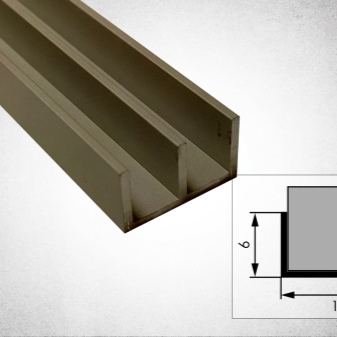
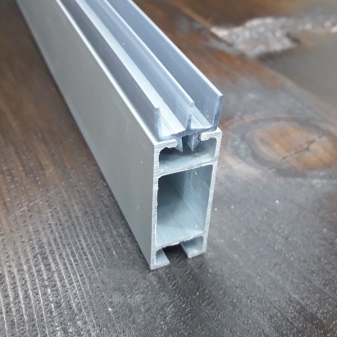
The design model has its own designation: 265, 266 and similar numbers. It is not tied to certain dimensions - those, in turn, lie far beyond these values.
Areas of use
The W-shaped structure is used in the assembly of sliding wardrobes and bookshelves, in the development of sliding and sliding doors, for window production, in the production of shower cabins and as elements of bath screens.
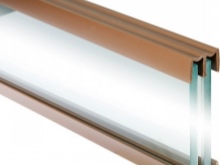

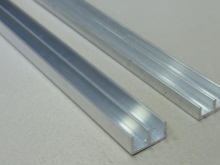
Ш-profile is ideally combined with (org) glass, opaque plastic, composite and metal shutters.
The non-susceptibility of aluminum and stainless steel to destruction from the action of a humid and aggressive environment is a guarantee of durability and high quality, presentation of the structure (and of the W-profile in particular).
Window W-shaped profile with exact correspondence of the width of the grooves to the thickness of the glass allows the latter to securely fix with its edges in the seat. Modern metal-plastic windows use the W-profile as a double-glazed window; the sealing of the interior space (no warm air leakage from the room) is achieved with the help of sealing inserts. In their role, rubber or foamed plastic is used.
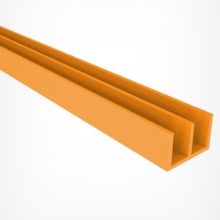
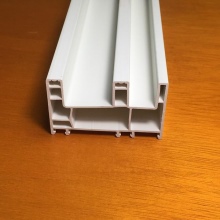














The comment was sent successfully.